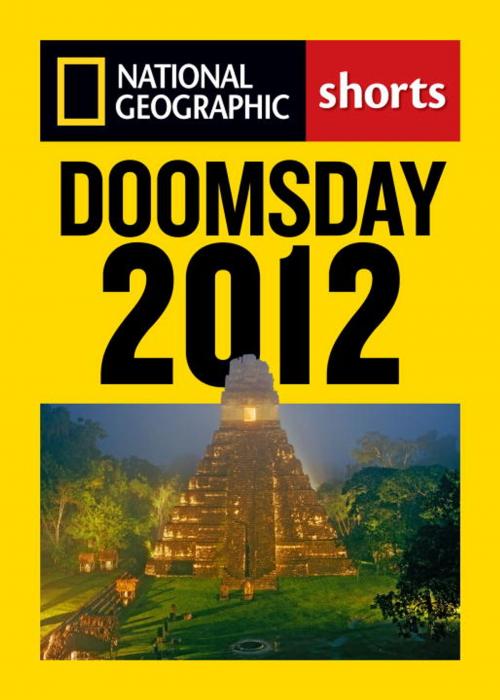| Author: | Catherine Zuckerman | ISBN: | 9781426210068 |
| Publisher: | National Geographic Society | Publication: | July 3, 2012 |
| Imprint: | National Geographic | Language: | English |
| Author: | Catherine Zuckerman |
| ISBN: | 9781426210068 |
| Publisher: | National Geographic Society |
| Publication: | July 3, 2012 |
| Imprint: | National Geographic |
| Language: | English |
The Maya calendar started on August 11, 3114 BCE (corresponding date in the proleptic Gregorian calendar) and will end on December 21 2012. Will it be Armageddon or just another day? The believers are making survival preparations and turning to religious leaders for guidance and solace. Follow National Geographic through the maze of doomsday prophets, cult leaders, and international and historic end times teachings to understand the science behind the Maya calendar and the phenomenon of Armageddon predictions.
Scientists and historians know that end-of-days thinking has occurred throughout time around the world. Norse mythology predicted the world would be submerged in water; ancient Greeks believed that Zeus’s defeat by his son would be the grand finale. In A.D. 79, Romans thought Mount Vesuvius’s eruption in Pompeii was the start of the apocalypse. Jewish, Christian, and Islamic texts all include some writing about end times. The year 1666—feared by many Christians—proved itself to be the year of the Beast when the Great Fire of London visited God’s wrath (as widely believed) on the British. Hailey’s Comet drove Europeans and Americans into apocalyptic fits in 1910.
Individual charismatic figures have led thousands in unfulfilled Armageddon watches. For example, in 1843, spiritual leader William Miller’s doomsday prediction failed (The Great Disappointment), but led followers to establish the Seventh Day Adventists. The Jehovah’s Witnesses awaited the world’s end in 1914. Preacher Jim Jones led hundreds of cult members to commit suicide in Ghana in the 1970s. Pat Robertson was certain Jesus was returning for the Rapture in the 1980s. The leader of the cult Heaven’s Gate convinced 39 followers to commit suicide to escape imminent destruction in 1997. And there’s no sign of a slow down. In fact, the Internet has spawned a plethora of doomsday cult leaders, from Y2K hysterics to the most recent religious figure Harold Camping, whose rapture predictions of 2011 left his followers earth-bound.
National Geographic debunks the myth and illuminates the fascinating realities of the Maya calendar, the 2012 phenomenon, and Armageddon prophecies through the ages.
The Maya calendar started on August 11, 3114 BCE (corresponding date in the proleptic Gregorian calendar) and will end on December 21 2012. Will it be Armageddon or just another day? The believers are making survival preparations and turning to religious leaders for guidance and solace. Follow National Geographic through the maze of doomsday prophets, cult leaders, and international and historic end times teachings to understand the science behind the Maya calendar and the phenomenon of Armageddon predictions.
Scientists and historians know that end-of-days thinking has occurred throughout time around the world. Norse mythology predicted the world would be submerged in water; ancient Greeks believed that Zeus’s defeat by his son would be the grand finale. In A.D. 79, Romans thought Mount Vesuvius’s eruption in Pompeii was the start of the apocalypse. Jewish, Christian, and Islamic texts all include some writing about end times. The year 1666—feared by many Christians—proved itself to be the year of the Beast when the Great Fire of London visited God’s wrath (as widely believed) on the British. Hailey’s Comet drove Europeans and Americans into apocalyptic fits in 1910.
Individual charismatic figures have led thousands in unfulfilled Armageddon watches. For example, in 1843, spiritual leader William Miller’s doomsday prediction failed (The Great Disappointment), but led followers to establish the Seventh Day Adventists. The Jehovah’s Witnesses awaited the world’s end in 1914. Preacher Jim Jones led hundreds of cult members to commit suicide in Ghana in the 1970s. Pat Robertson was certain Jesus was returning for the Rapture in the 1980s. The leader of the cult Heaven’s Gate convinced 39 followers to commit suicide to escape imminent destruction in 1997. And there’s no sign of a slow down. In fact, the Internet has spawned a plethora of doomsday cult leaders, from Y2K hysterics to the most recent religious figure Harold Camping, whose rapture predictions of 2011 left his followers earth-bound.
National Geographic debunks the myth and illuminates the fascinating realities of the Maya calendar, the 2012 phenomenon, and Armageddon prophecies through the ages.















